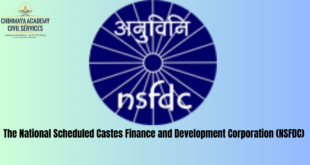- Somanchi, Anmol, ‘Food and Social Security at the Margins: The Parhaiyas of Jharkhand’, Economic and Political Weekly, Vol 58, Issue 4, January 28, 2023.
- While many government policies and schemes have been announced across the country to help vulnerable communities, it is imperative to look at the extent to which these schemes have succeeded.
- Anmol Somachi’s paper, ‘Food and Social Security at the Margins: The Parhaiyas of Jharkhand’ is one such study that examines the level of penetration and coverage of government schemes and the bottlenecks that hinder its implementation.
At the margins of society
- In 2003, the Supreme Court instructed governments to provide 35 kilograms of subsidised foodgrains every month to the Particularly Vulnerable Tribal Groups (PVTGs) through the public distribution system (PDS).
- Furthermore, the Jharkhand government, in 2015, introduced the Adim Jan Jati Pension (AJJP) scheme, which provides ₹600 every month to such households provided they are not already included in another pension scheme.
- It is in this context that the author looks at the effectiveness of welfare schemes promised to the Parhaiyas. A door-to-door survey of all PVTG households was conducted in November 2018, in the Manika block of Latehar district and Satbarwa block of Palamu district in Jharkhand.
- The survey, conducted by teams of student volunteers, looked at the status and coverage of social security programmes and the barriers to implementing such schemes. They visited 13 and five villages/hamlets in Manika and Satbarwa, respectively.
- Incidentally, all the households where the study was conducted, were from the Parhaiya tribe.
- The author introduces the Parhaiya community of Jharkhand as one of the 75 communities listed under the PVTGs in the country.
- Like most tribal groups, despite having a rich culture and heritage, with different languages and livelihoods, the Parhaiyas share a history of exploitation, discrimination, marginalisation and alienation from mainstream society.
- Traditionally, their main source of living came from shifting agriculture and hunting-gathering.
- But climate change, wildlife and forest policies, denial of land rights and encroachment of their ancestral land by governments have made their livelihoods precarious.
- This has led to poverty, hunger and malnourishment in the community. The author explains that though the rate of development and advancement is extremely slow, the present living conditions are better, with almost every household having at least one source of clean drinking water, and toilet facilities and a few families even building pucca houses with the help of government housing schemes.
- Yet, the potential for social mobility seems to be poor due to the lack of proper education.
- Among adults, more than two-thirds have never attended school and more than 25% of the younger generation have come out of school.
- Access to education was limited, putting the community at the mercy of precarious labour. Many, including children, were forced to enter exploitative labour contracts. With livelihood being so insecure, the community largely depends on government social security schemes.
Food and pension schemes
- In Jharkhand, 88% of PVTG households were on the PDS list and under the Antyodaya scheme which ensured that PDS grains were free of cost for them. The author explains that such coverage was commendable as most households were scattered across the State.
- However, the lack of a new ration card or Aadhar-related issues resulted in 12% of households not having access to such schemes. It was seen that in areas where Aadhaar-based biometric authentication (ABBA) was mandatory, it became difficult to buy PDS grains. There has been a significant improvement in the PDS in the last decade.
- Yet, problems of biometrics and corruption persist, becoming bottlenecks to the smooth functioning of such schemes. Many PDS dealers continue to take small cuts in the name of transportation at the time of monthly distribution, a practice locally known as katauti.
- According to the author, attempts by the government to prevent corruption through biometrics and new schemes that eliminate the middlemen have largely failed due to a lack of digital infrastructure and poor management. On the other hand, pension schemes were better administered in the State, with lesser issues of corruption. But it has faced other challenges.
- To begin with, the amount has remained very low (between ₹200 to ₹600) for a long time.
- Secondly, pensions were stopped for many households due to Aadhar-related issues and similar to the PDS system, many new families were excluded from the scheme due to a lack of ration cards.
- Thirdly, the pendency rate of the applications was high. Since there is a ceiling on the total pensions that local administrations adhere to due to budgetary restrictions, many eligible applicants remain on a waiting list till a vacancy opens up.
- Almost 34% of the Parhaiya households surveyed had one or more pending applications. More than 60% of pension-less households had not applied for pensions despite meeting all eligibility criteria.
- The coercive introduction of the Aadhaar Payment Bridge System (APBS) for the payment of pension in 2019 has created a new hassle as pension payments have been discontinued for many households in Manika and Satbarwa due to problems related to e-KYC and Aadhaar.
- The poor levels of digital infrastructure in the rural population and the government’s decision to expand the scale of Aadhaar have resulted in more problems, let alone transparency, in the process of distributing social security schemes.
A long way to go
- The coverage of the food and social security schemes implemented by the government for the Parhaiya community must be considered a success, as it has improved significantly in the last decade.
- Yet, most households that received both pension and food rations still reported occasional or frequent hunger. This shows the inadequacy of the basic food security and welfare provided to the tribal community in the State.
- The provision of food and pension alone is insufficient for the overall development of vulnerable communities. Instead of merely focusing on short-term schemes that appease the public, more schemes and policies that promote long-term solutions such as stable employment and education along with maternity and healthcare benefits must be introduced by the local government for all vulnerable communities.
- Moreover, steps must be taken to ensure that the overall social conditions of the community are improved.
SOURCE: THE HINDU, THE ECONOMIC TIMES, PIB
 Chinmaya IAS Academy – Current Affairs Chinmaya IAS Academy – Current Affairs
Chinmaya IAS Academy – Current Affairs Chinmaya IAS Academy – Current Affairs



